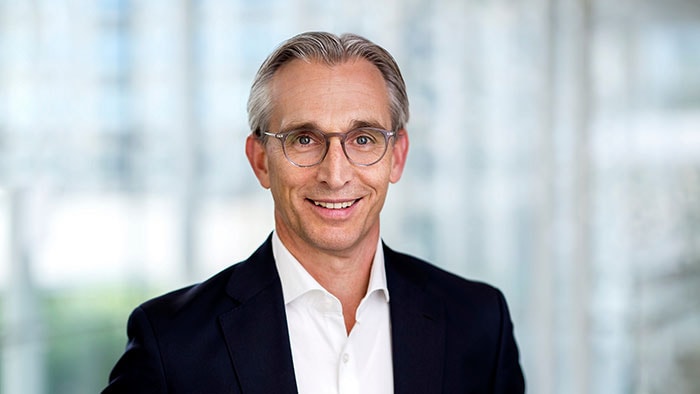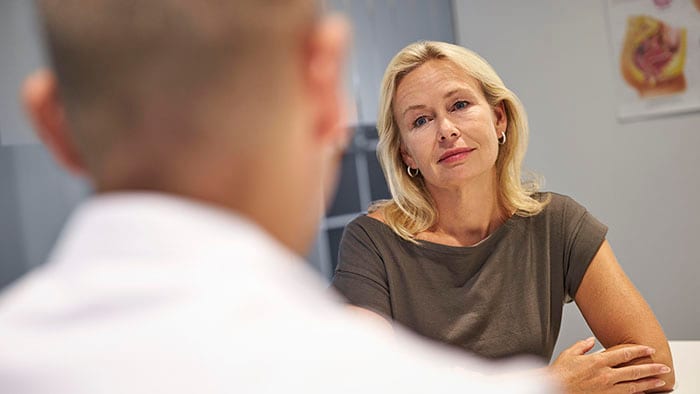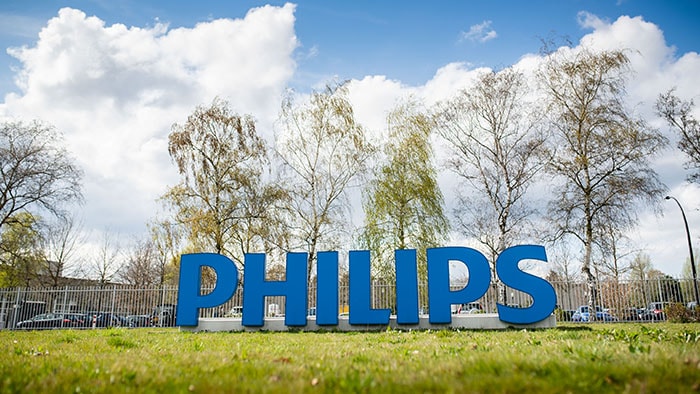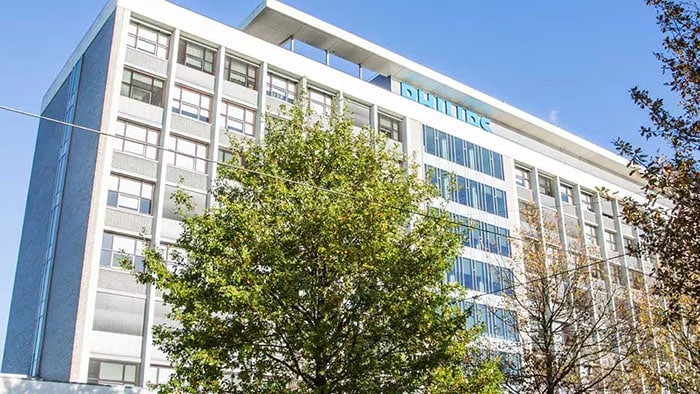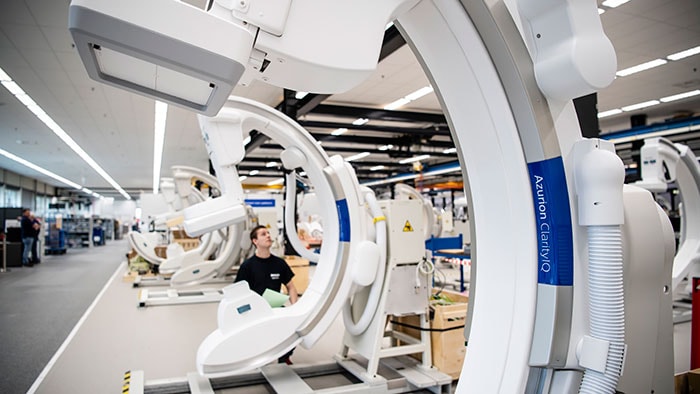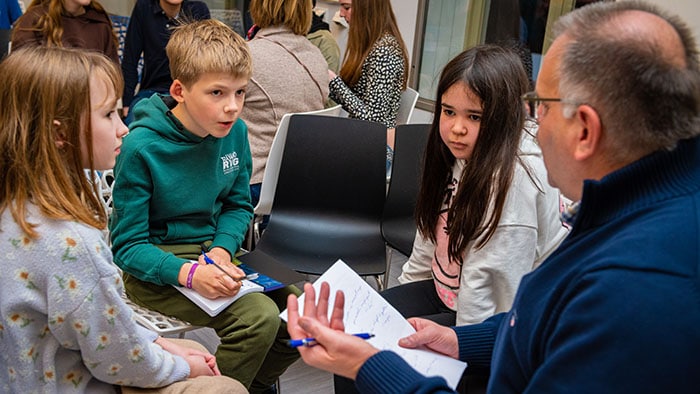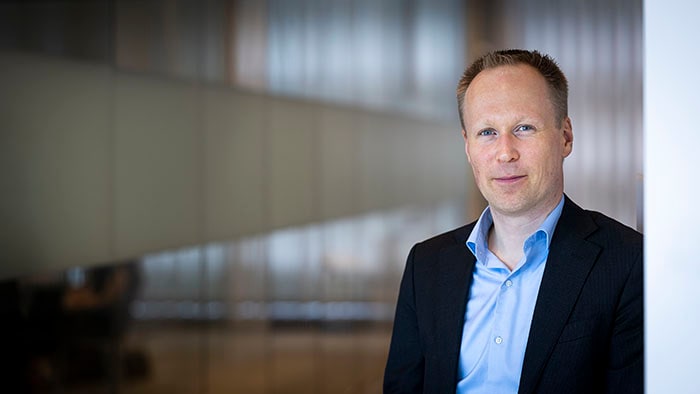In de regio Eindhoven bouwt Philips al sinds 1971 aan de meest vooruitstrevende gezondheidsinnovaties. De systemen gaan vanuit de Brainport-regio, de grootste innovatiehub van Philips wereldwijd, de hele wereld over en er worden miljoenen patiënten mee behandeld. Dit jaar bestaat de Philips-campus in Best 50 jaar, het is een mooi moment voor een analyse: hoe zijn deze innovaties eigenlijk al die jaren tot stand gekomen? En waarom lukt dit (ons) juist in Eindhoven zo goed. In gesprek met Robin de Paus, principal architect bij IGT Systems, en Johan Dries, senior scientist IGT Systems Innovation.
Bijdragen aan gezondheid van mensen
“Een aantal jaar terug stond ik bij de douane in de Verenigde Staten”, zo begint Robin zijn verhaal over waarom hij na tien jaar nog steeds bij Philips werkt. “Je kent het wel, er wordt van alles aan je gevraagd om te controleren of je het land in mag. Ik legde aan de douanebeambte uit dat ik in de VS moest zijn om bij Philips te werken aan een nieuwe technologie voor hartkatheterisaties. Zijn indringende blik sloeg helemaal om, en dankbaarheid straalde van zijn gezicht. Het bleek dat zijn vader vlak daarvoor met een dergelijke technologie aan een hartaandoening was behandeld. Dat vergeet ik nooit meer. Je draagt echt bij aan de gezondheid van mensen over de hele wereld.”
Voor Johan speelt dit aspect net zo’n belangrijke rol. Aan de hardware-kant van innovatie kan hij zijn passie voor mechatronica kwijt. “Ik werk al sinds 1994 binnen Philips en heb echt aan de wieg gestaan van mechatronica in de regio Eindhoven. En doe dit elke dag nog met plezier, omdat ik weet wat we bijdragen aan de gezondheidszorg.”
Robin en Johan werken beiden al jaren aan productinnovaties. Van de nieuwe Azurion FlexArm tot de positiedetectie van een biopsie naald met camera’s; zij zijn erbij betrokken. Robin richt zich als principal architect op de software; Johan neemt de hardware voor zijn rekening.
Robin, Johan, laten we het voorbeeld nemen van de Azurion FlexArm, toch wel één van de meest aansprekende innovaties van de laatste jaren. Hoe kwam het idee ervoor tot leven?
“Het idee voor Azurion FlexArm is ontstaan uit ons plan om het oude statief van Allura Xper een update te geven. We werkten aan een aangepaste c-boog met verschillende verbeteringen voor de arts, zoals een interne kabelloop en de mogelijkheid om ook zwaarlijvige patiënten te behandelen. We werden door onze collega’s van development ook nog gewezen op de toegevoegde waarde van een extra draaipunt in de ophanging van de c-boog. Daar zagen we meteen de grote potentie van: flexibeler interveniëren en meerdere procedures uitvoeren in één kamer. Samen met de klanten hebben we deze oplossing geoptimaliseerd. Zo is eigenlijk het eerste prototype van de Azurion FlexArm ontstaan. En nu is het onderdeel van een oplossing die miljoenen mensen wereldwijd verder helpt.”
Eigenlijk is een goed idee alleen dus niet genoeg. Hoe kom je tot een innovatie die echt waarde toevoegt, zoals de Azurion FlexArm?
“We hebben in ons innovatieteam natuurlijk honderden ideeën, maar we kunnen niet alles uitvoeren. Daarom is het belangrijk om een goed beeld te hebben van de potentie van een idee. Je kunt je geld maar één keer besteden. Je moet daarom veel details uitwerken en ervoor zorgen dat je verhaal volledig staat. Dat lijkt lastig, en dat is het ook, maar doordat we een multidisciplinair team hebben, kunnen we alle aspecten van een idee snel overzien. We werken samen met mensen van research, clinical science, development, marketing en natuurlijk onze klanten. Zo weten we snel het kaf van het koren te scheiden en komen we tot een innovatie die echt waarde toevoegt.”
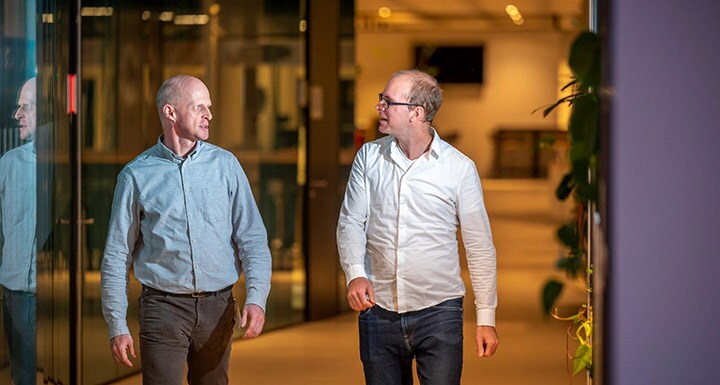
Wat maakt dat innovatie vanuit Philips zo succesvol is?
“We werken tussen research en development in: als innovatieteam ontwikkelen we prototypes op basis van de input van research, maar we ontwikkelen nog geen schaalbare oplossing. Dat volgt daarna pas. We zitten dus precies tussen het onderzoek en de praktijk in en kunnen van de kennis van beide werelden gebruik maken. De lijntjes met klanten zijn ook heel erg kort: hoe meer we kunnen schakelen met een specialist, des te beter begrijpen we zijn of haar behoeften, die we vervolgens meenemen in het innovatieproces.”
“Als we een werkend prototype klaar hebben, testen we het vaak al vrij vroeg in het ontwikkelproces samen met een klant. Zo komen we samen tot meerdere iteraties en, uiteindelijk, een echte oplossing die we kunnen opschalen en verkopen. De schakel met de praktijk is hierin van grote waarde.”
Wat zou je een schoolvoorbeeld noemen van een innovatie waarbij dit netwerk heeft gezorgd voor maximale toegevoegde waarde?
Robin: “Ik denk dat ClarityIQ hier een goed voorbeeld van is. Het werd steeds lastiger om onze röntgendetectoren te verbeteren, omdat de efficiëntie al zo goed was dat we tegen de grenzen van de fysica aanliepen. Daarentegen werden computers alsmaar sneller en sneller. Zo ontstond het idee om röntgenbeelden na te bewerken met een computer-algoritme om ze scherper te maken.
De verbeterde röntgenbeelden namen we mee naar een aantal klanten. Die vonden het beeld inderdaad mooier en duidelijker, maar zagen de toegevoegde waarde daarvan niet meteen: wat heb ik aan een scherper beeld als ik de diagnose ook al kon stellen met de oude beelden?
Toen ontstond het idee om de stralingsdosis van het röntgensysteem te verlagen en de beeldkwaliteit vervolgens weer op te schalen met het algoritme. Dat was een ongelooflijk idee en de feedback van klanten was overweldigend, want een lagere stralingsdosis biedt direct voordelen voor zowel de gezondheid van de arts als de patiënt. Uiteindelijk hebben we de stralingsdosis tot een factor 4 kunnen verminderen. In een wereld waarin een verbetering van 20 procent al als significant wordt beschouwd was dit echt revolutionair.”
Het idee ontstond om de stralingsdosis van het röntgensysteem te verlagen en de beeldkwaliteit vervolgens weer op te schalen met het algoritme. Dat was een ongelooflijk idee en de feedback van klanten was overweldigend, want een lagere stralingsdosis biedt direct voordelen voor zowel de gezondheid van de arts als de patiënt. Uiteindelijk hebben we de stralingsdosis tot een factor 4 kunnen verminderen. In een wereld waarin een verbetering van 20% al als significant wordt beschouwd was dit echt revolutionair.
Robin de Paus
Principal Architect
Waarom werkt dit juist in de regio Eindhoven? Robin: “Zeker voor complexe innovaties is het ook een uitkomst dat we zowel de ontwikkeling als de fabricage op één plek doen. Eigenlijk voldoen we in deze omgeving aan alle randvoorwaarden om een idee uit te laten groeien tot een fantastische oplossing. Alles komt hier samen.”
Johan: “Rondom Eindhoven zit een heel ecosysteem van bedrijven waar op topniveau mechatronica wordt bedreven. Meerdere bedrijven stammen af vanuit Philips en maken nog steeds deel uit van een mechatronica netwerk waarin we kennis delen en het niveau steeds hoger tillen! Ook de manier waarop we ons als Philips organiseren, is daarnaast niet te onderschatten: de samenwerking tussen de verschillende disciplines en dicht bij onze klanten voor het bedenken, verbeteren en opschalen van een innovatie, is ingebakken in onze processen. Dat is wel heel speciaal.”
Rondom Eindhoven zit een heel ecosysteem van bedrijven waar op topniveau mechatronica wordt bedreven. Meerdere bedrijven stammen af vanuit Philips en maken nog steeds deel uit van een mechatronica netwerk waarin we kennis delen en het niveau steeds hoger tillen.
Johan Dries
Senior Scientist
“We bouwen niet alleen de röntgensystemen om katheters in een kransslagader exact te positioneren, we ontwikkelen ook die katheters zelf. We integreren echo, we voegen er hemo aan toe. We bewegen ons van losse producten naar totaaloplossingen. Het combineren van al deze technologieën maakt Philips echt uniek. En Eindhoven is dé hotspot waar dit allemaal ontstaat.”
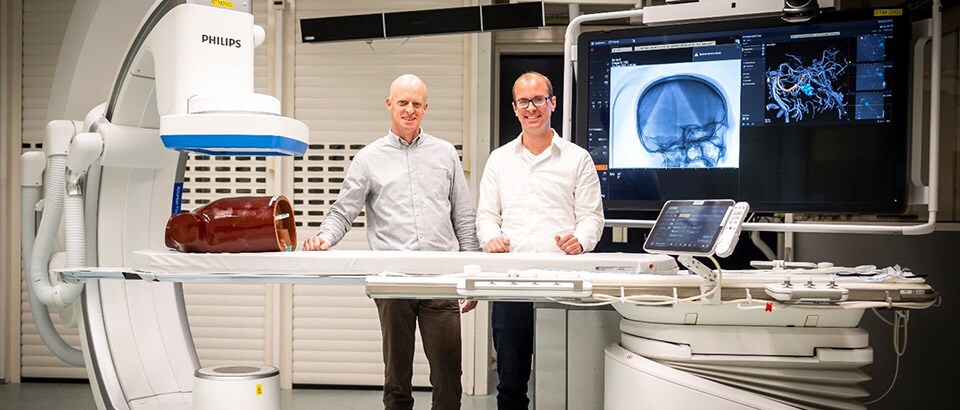
"We have everything here to invent and scale up innovations"
In the Eindhoven region, Philips has been building cutting-edge health innovations since 1971. The systems go all over the world from the Philips’ innovation hub in the Brainport region, the largest one in the world, and millions of patients are treated with them. This year marks the 50th anniversary of the Phillips campus in Best, which is a good time for an analysis: how have these innovations come about all these years? And why does Eindhoven work so well (for us)? In conversation with Robin de Paus, principal architect at IGT Systems, and Johan Dries, senior scientist IGT Systems Innovation.
Bijdragen aan gezondheid van mensen
"A few years back I was at customs in the United States," Robin starts off his story about why he is still working at Philips after ten years. "You know the situation, you are asked all kinds of questions to check if you are allowed to enter the country. I explained to the customs officer that I had to be in the US to work at Philips on a new technology for heart catheterizations. His penetrating gaze turned completely, and gratitude radiated from his face. It turned out that his father had just been treated for a heart condition with such technology. I'll never forget that. You're really contributing to the health of people all over the world."
For Johan, this aspect plays a role just as important. On the hardware side of innovation, he can indulge his passion for mechatronics. "I have been working within Philips since 1994 and really stood at the cradle of mechatronics in the Eindhoven region. And still enjoy doing this every day, because I know what we contribute to healthcare."
Robin and Johan have both been working on product innovations for years. From the new Azurion FlexArm to the position detection of a biopsy needle with cameras; they are involved. Robin, as principal architect, focuses on the software; Johan takes care of the hardware.
Robin, Johan, let's take the example of the Azurion FlexArm, surely one of the most appealing innovations of recent years. How did the idea for it come to life?
"The idea for Azurion FlexArm came from our plan to update the old Allura Xper tripod. We were working on a custom c-arm with several improvements for the physician, such as an internal cable run and the ability to treat obese patients as well. Our development colleagues also pointed out the added value of an extra pivot point in the suspension of the c-arm. We immediately saw the great potential of this: more flexible intervention and performing multiple procedures in one room. Together with the customers, we optimized this solution. This is actually how the first prototype of the Azurion FlexArm was created. And now it is part of a solution that is helping millions of people around the world move forward."
So actually, a good idea alone is not enough. How do you come up with an innovation that really adds value, like the Azurion FlexArm?
"We have hundreds of ideas in our innovation team, of course, but we can't implement everything. That's why it's important to have a good idea of the potential of an idea. You can only spend your money once. Therefore, you have to work out a lot of details and make sure your story is complete. That seems difficult, and it is, but because we have a multidisciplinary team, we can quickly oversee all aspects of an idea. We work together with people from research, clinical science, development, marketing and, of course, our clients. That way we can quickly separate the wheat from the chaff and arrive at an innovation that really adds value."

What makes innovation from Philips so successful?
"We work in between research and development: as an innovation team we develop prototypes based on the input from research, but we don't develop a scalable solution yet. That will follow later. We are therefore exactly in between research and practice and can make use of the knowledge of both worlds. The lines of communication with customers are also very short: the more we can connect with a specialist, the better we understand his or her needs, which we then include in the innovation process."
"Once we have a working prototype ready, we often test it together with a customer fairly early in the development process. In this way we arrive together at several iterations and, ultimately, a real solution that we can scale up and sell. The link to practice is of great value in this."
What would you call a textbook example of an innovation where this network has provided maximum added value?
Robin: "I think ClarityIQ is a good example. It became increasingly difficult to improve our X-ray detectors because the efficiency was already so good that we were running up against the limits of physics. In contrast, computers were getting faster and faster. Thus was born the idea of post-processing X-ray images with a computer algorithm to make them sharper.
We took the improved x-ray images to a number of customers. They did indeed find the image more beautiful and clearer, but did not immediately see the added value: what is the use of a sharper image if I could already make the diagnosis with the old images?
Then the idea arose to lower the radiation dose of the X-ray system and then scale up the image quality with the algorithm. That was an incredible idea, and the customer feedback was overwhelming, because a lower radiation dose offers immediate benefits to both physician and patient health. In the end, we were able to reduce the radiation dose by up to a factor of 4. In a world where an improvement of 20 procent is already considered significant, this was truly revolutionary.”
The idea arose to lower the radiation dose of the X-ray system and then scale up the image quality with the algorithm. That was an incredible idea, and the customer feedback was overwhelming, because a lower radiation dose offers immediate benefits to both physician and patient health. In the end, we were able to reduce the radiation dose by up to a factor of 4. In a world where an improvement of 20% is already considered significant, this was truly revolutionary.
Robin de Paus
Principal Architect
Why does this work in the Eindhoven region in particular? Johan: "Around Eindhoven there is an entire eco system of companies where mechatronics is practiced at the highest level. Several companies originated from Philips and are still part of a mechatronics network in which we share knowledge and raise the level ever higher! In addition, the way we at Philips organize ourselves is not to be underestimated: the collaboration between the various disciplines and close to our customers for devising, improving and scaling up an innovation is ingrained in our processes. That is very special." Robin: "Especially for complex innovations, it is also a godsend that we do both development and manufacturing in one place. Actually, in this environment we meet all the preconditions for an idea to grow into a fantastic solution. Everything comes together here."
Around Eindhoven there is an entire eco system of companies where mechatronics is practiced at the highest level. Several companies originated from Philips and are still part of a mechatronics network in which we share knowledge and raise the level ever higher.
Johan Dries
Senior Scientist
"Not only do we build the X-ray systems to precisely position catheters in a coronary artery, but we also develop those catheters themselves. We integrate echo, we add hemo. We are moving from single products to total solutions. Combining all these technologies makes Philips truly unique. And Eindhoven is the hotspot where all of this is created."



